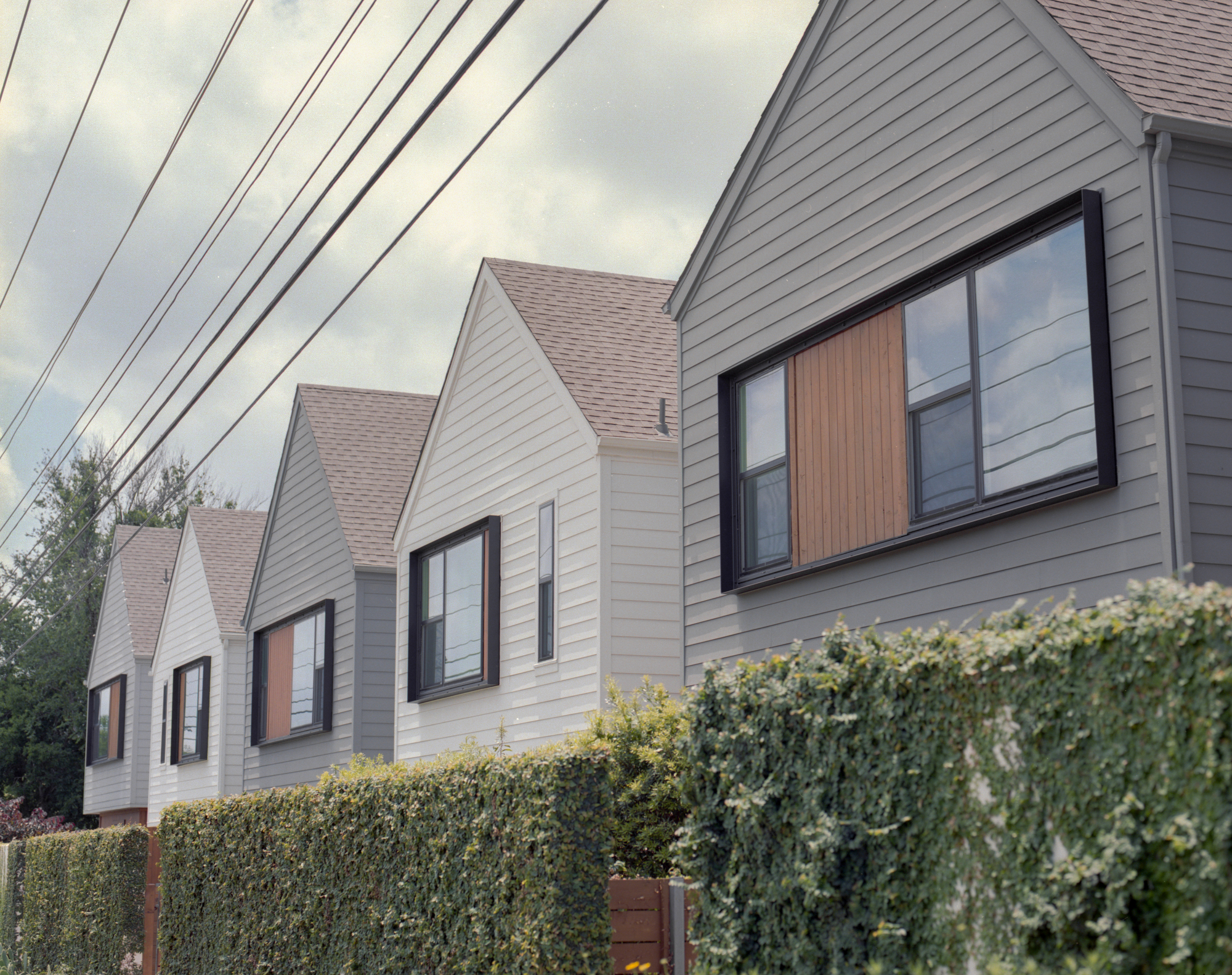During the very early days of the pandemic, I set out to capture Airport Boulevard, the 6.6 miles of pavement that intersects a large swath of greater East Austin. The historic street passes through a mixed-use development that once was the Robert Mueller Municipal Airport, and across I-35 where it comes to an end.
It’s one of many traffic corridors in a sprawling city, in which access to a mode of transportation becomes a prerequisite to employment, food, health care, education, and entertainment.
For those unfamiliar with Austin, East Austin is a historically Black neighborhood. Dating back to the early 1900s, city planners began segregating Austin, pushing minority communities east. Over the last decade, the area has undergone aggressive gentrification. And Airport Boulevard serves as a point where gentrification audaciously continues to push forward.
As the city continues to grapple with COVID-19, the landscape that exists along Airport Boulevard reveals both the shared and divergent experiences of the communities that live and work along this segmented strip of pavement. Slowing down to examine this diverse landscape, the structures that house us took on elevated importance as they become a microcosm for each individual’s experience of this pandemic.
With each day that we are isolated from friends, family, and strangers, our collective memory of this unique moment in history grows. Though Airport Boulevard will not change as a result of this crisis, the individuals and communities that live along it will never be the same.
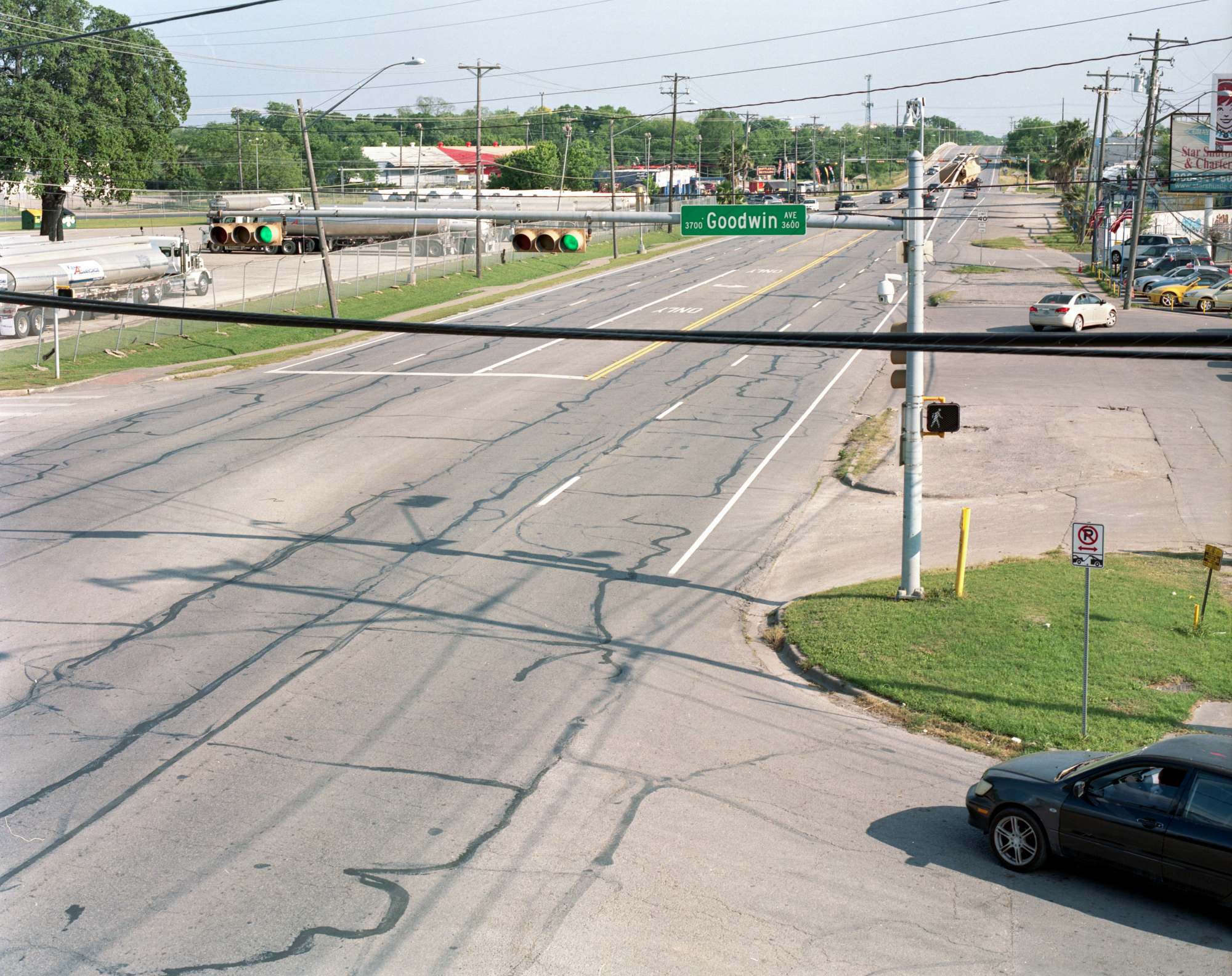
Airport Boulevard and Goodwin Avenue in Austin, Texas.
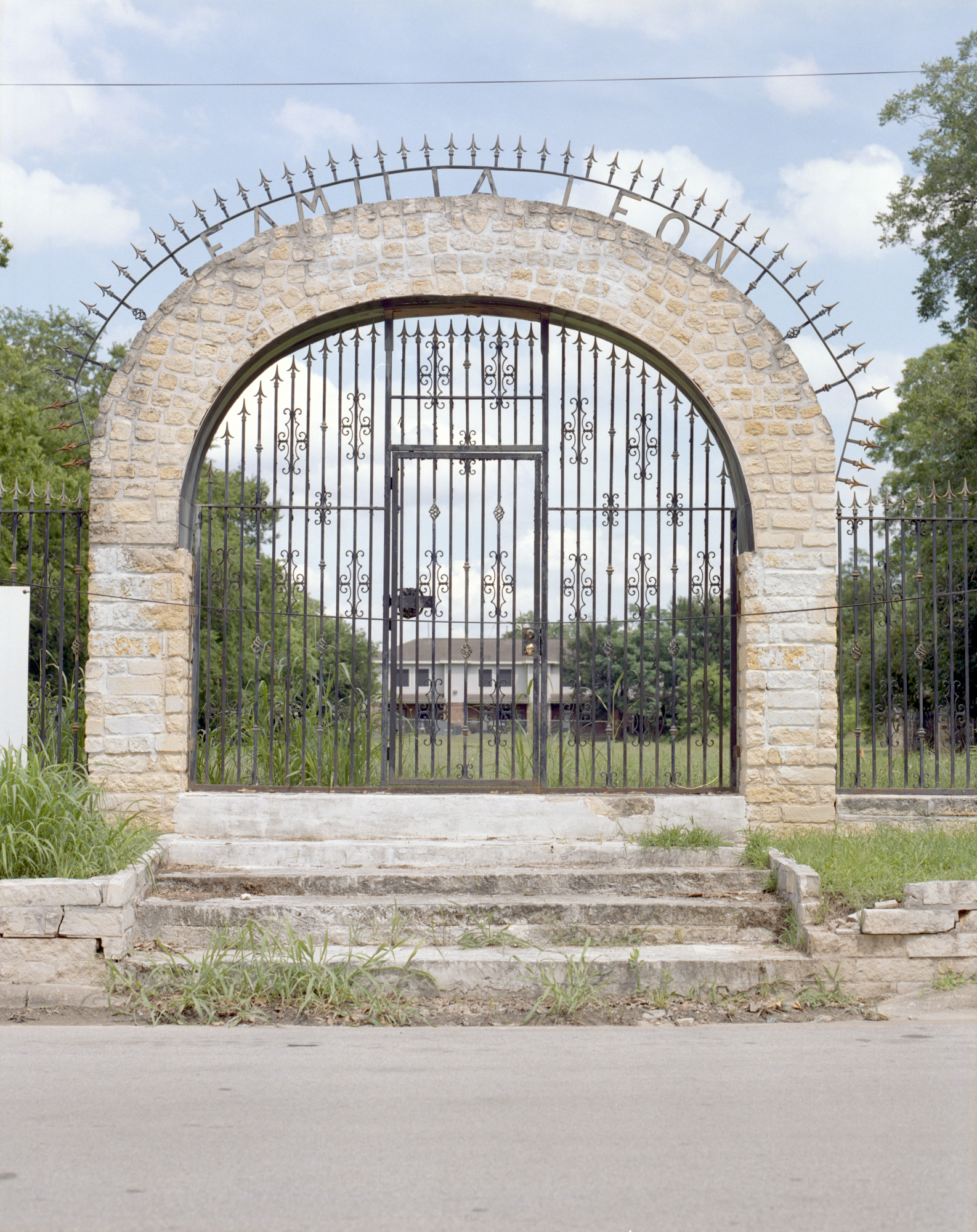
An ornate, wrought iron gate adorns a vacant lot off of Airport Boulevard. The lettering reads “Familia Leon.” Black and Hispanic communities have been displaced from greater East Austin as gentrification continues to push further east across the street.
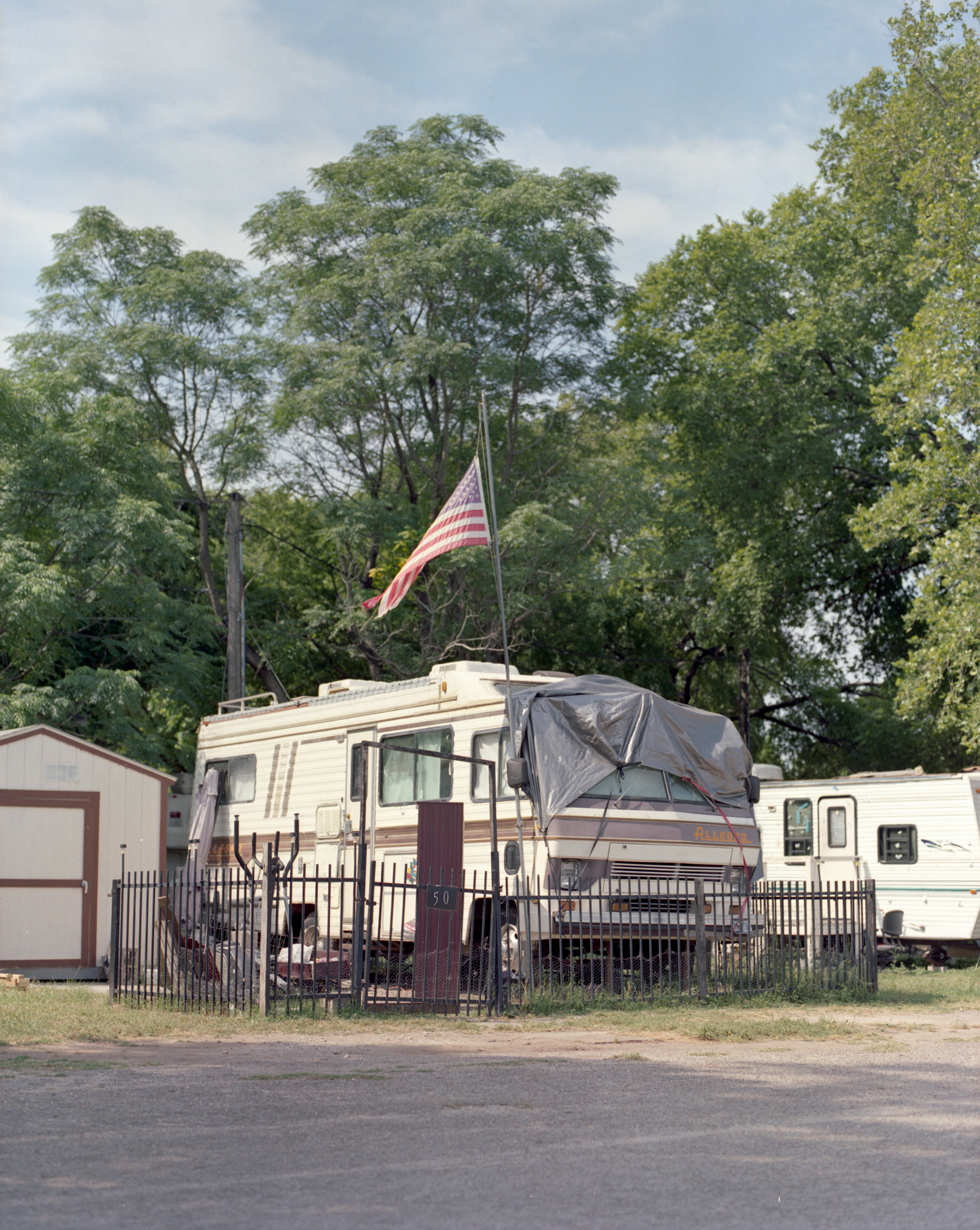
Bel-Aire Mobile Home Park at the southern end of Airport Boulevard.
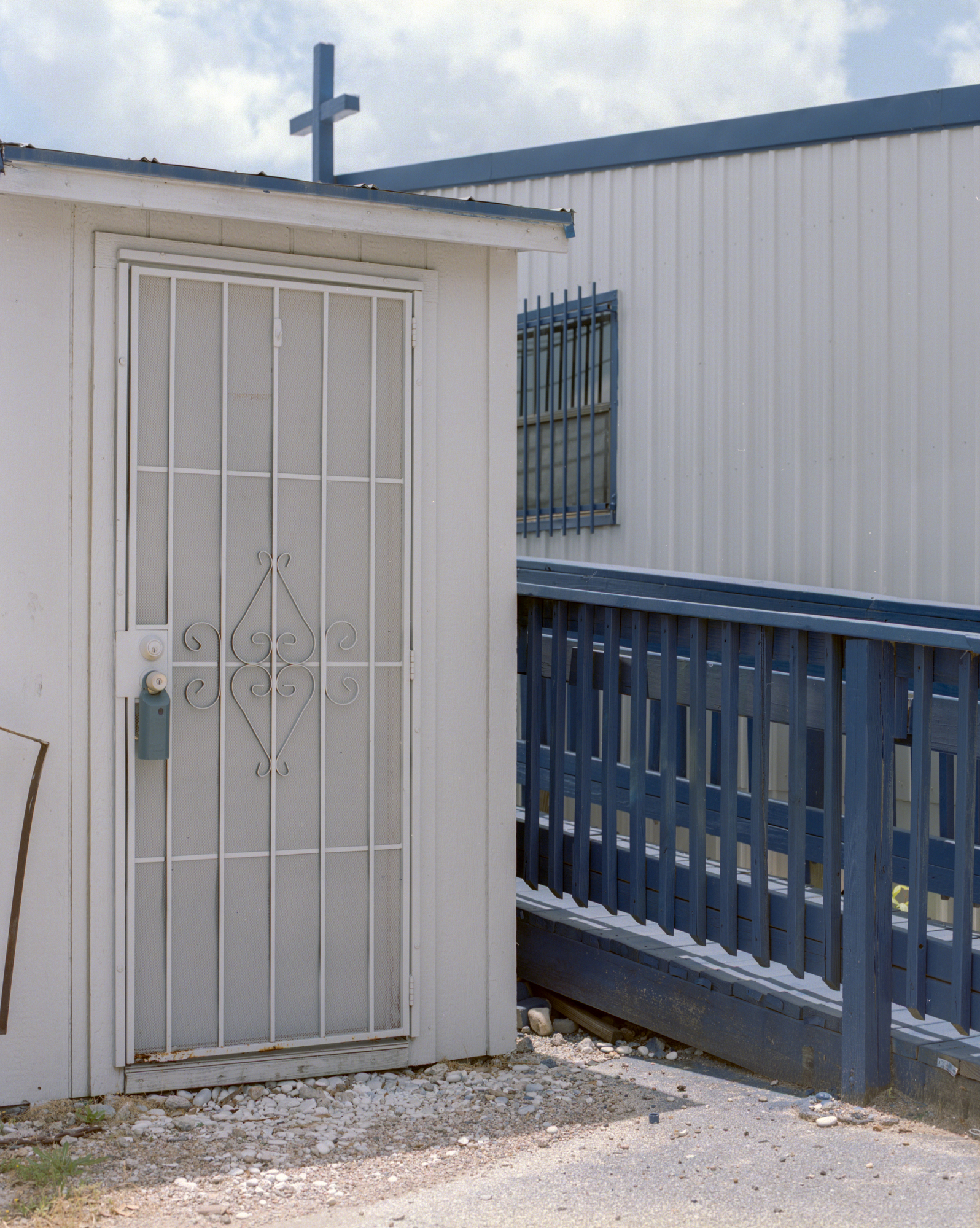
A lockbox adorns the door knob of True Hope Church on 12th and Airport Boulevard.
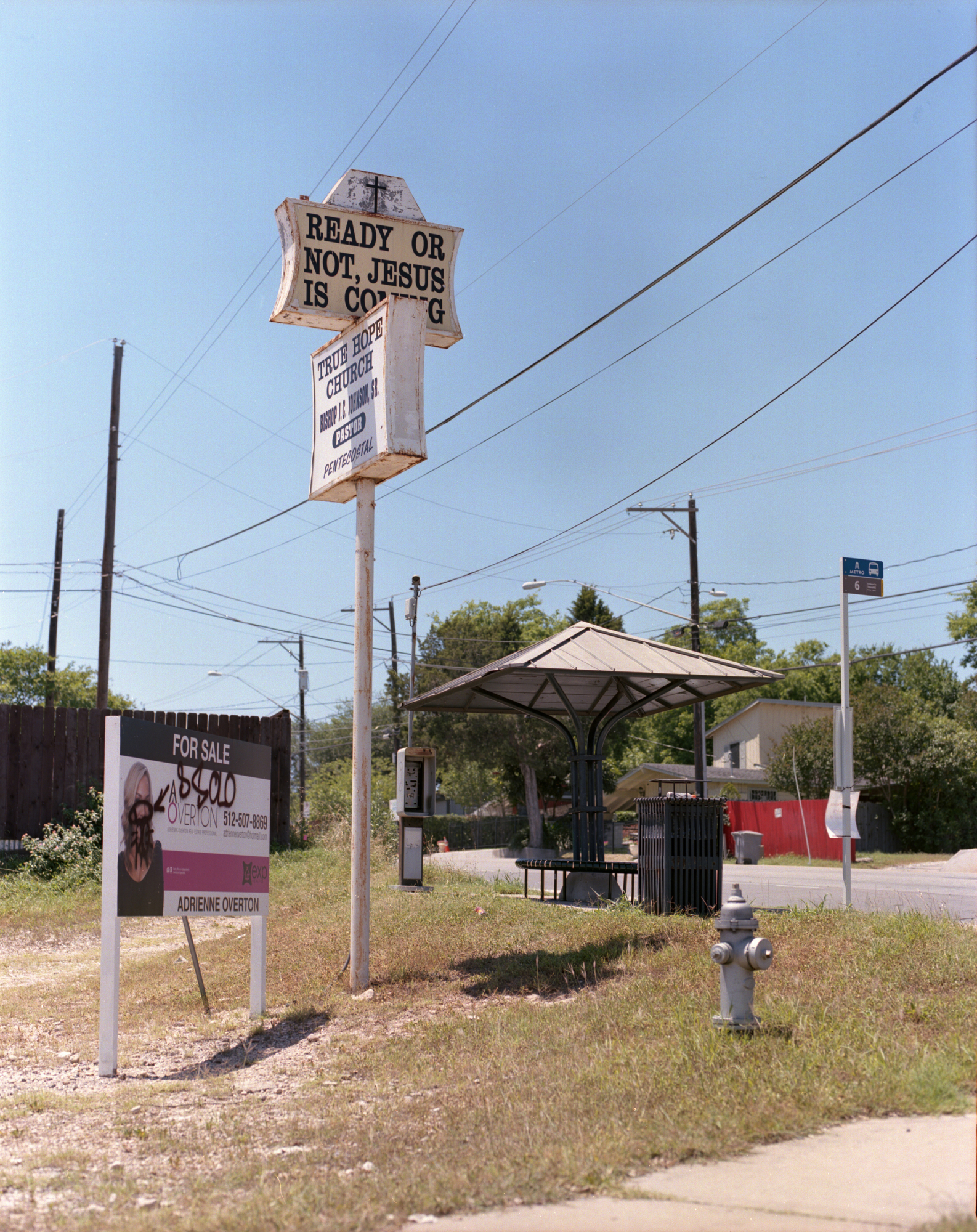
A vandalized for sale sign at True Hope Church.
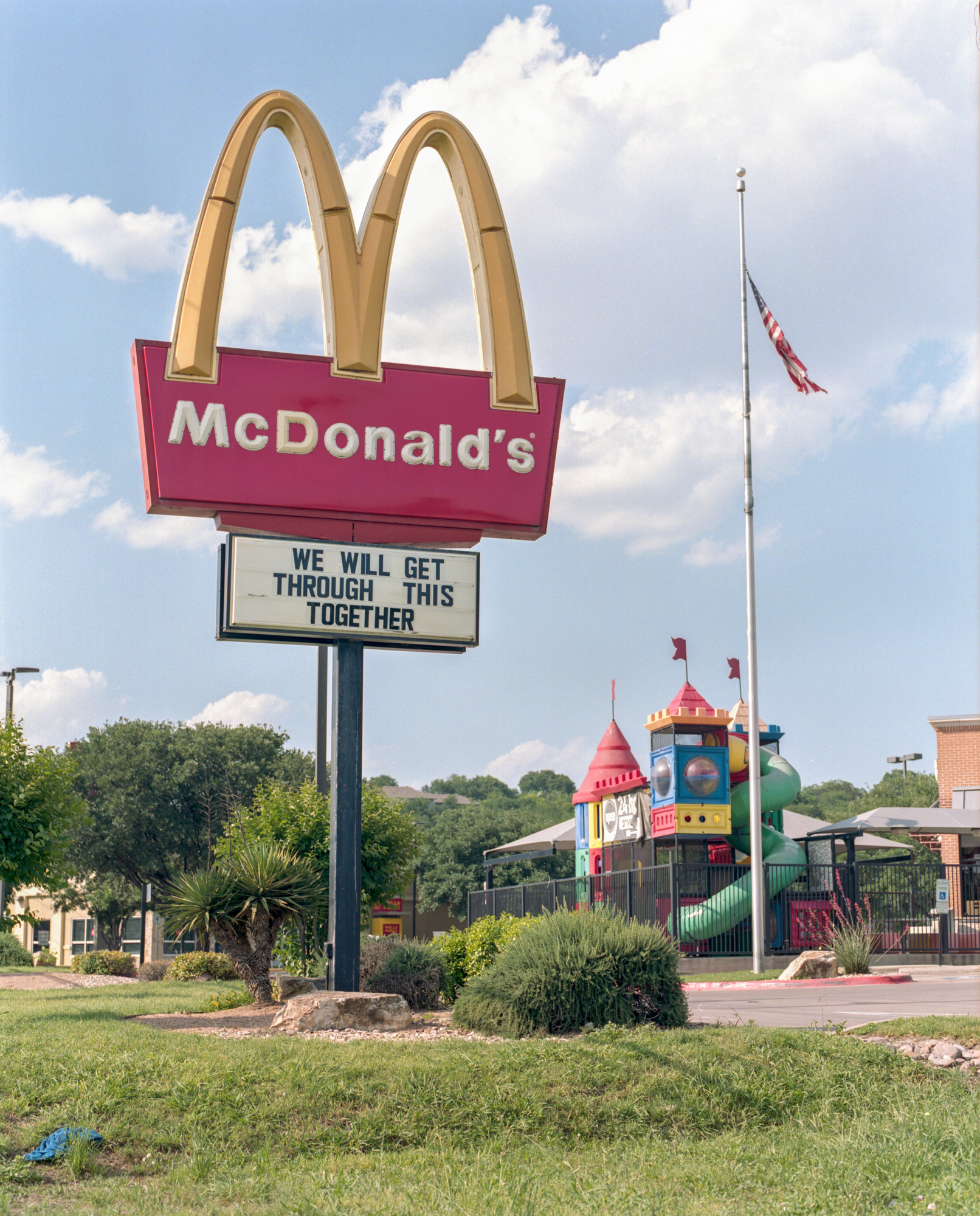
The sign at this Airport Boulevard McDonald’s is in a neighborhood where more affluent, predominantly white workers are able to work from home and mitigate their risk of contracting COVID-19. Communities of color continue to be disproportionately impacted by COVID-19 in large part because many Black and Hispanic workers have not able to work from home.
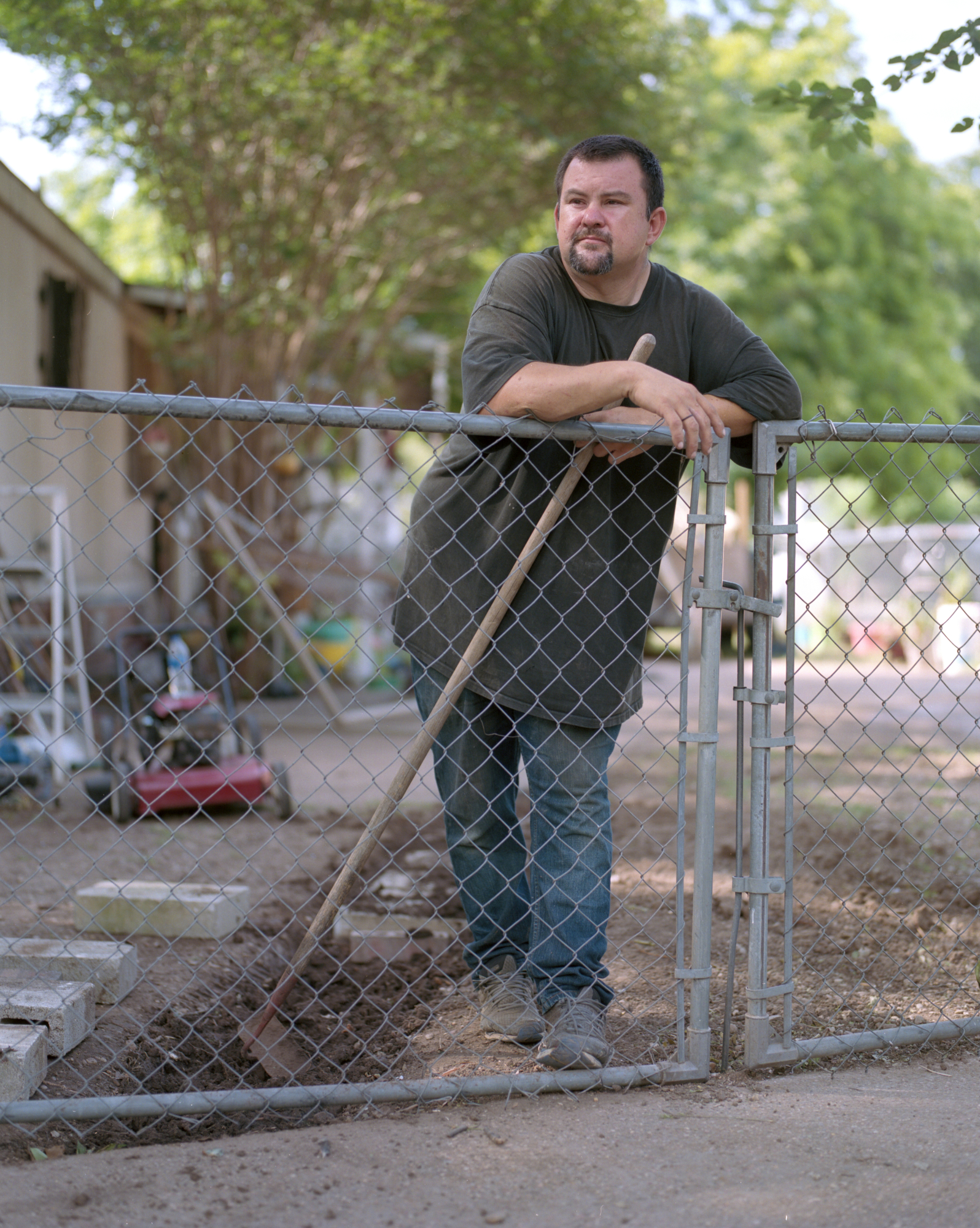
Erik, a resident of the Bel-Aire Mobile Home Park on Airport Boulevard, has seen his neighborhood change drastically over the years. He explains, “They’re forcing out mom and pop businesses for Quick-E-Marts and fast food chains.”
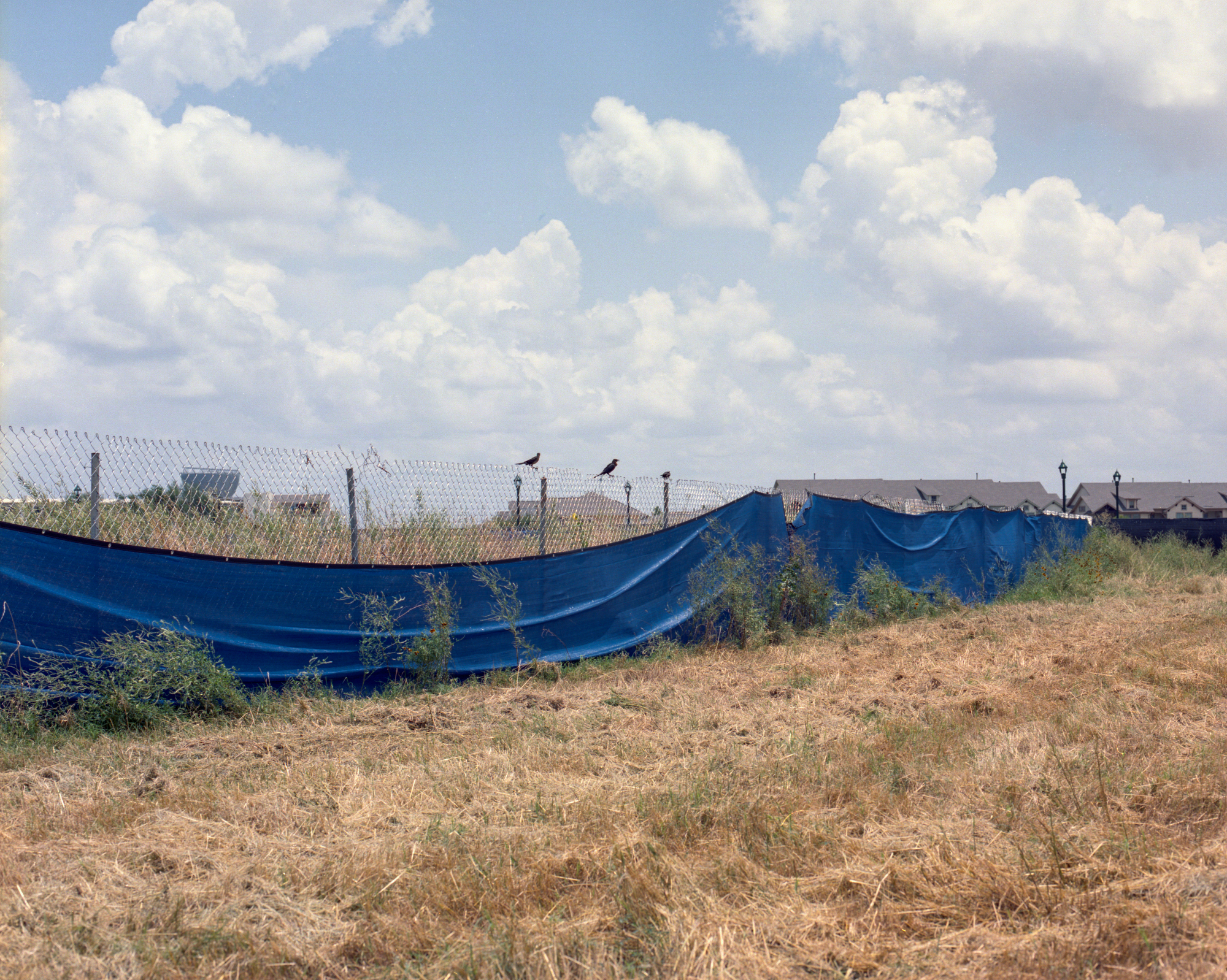
Construction in the Mueller development off of Airport Boulevard.
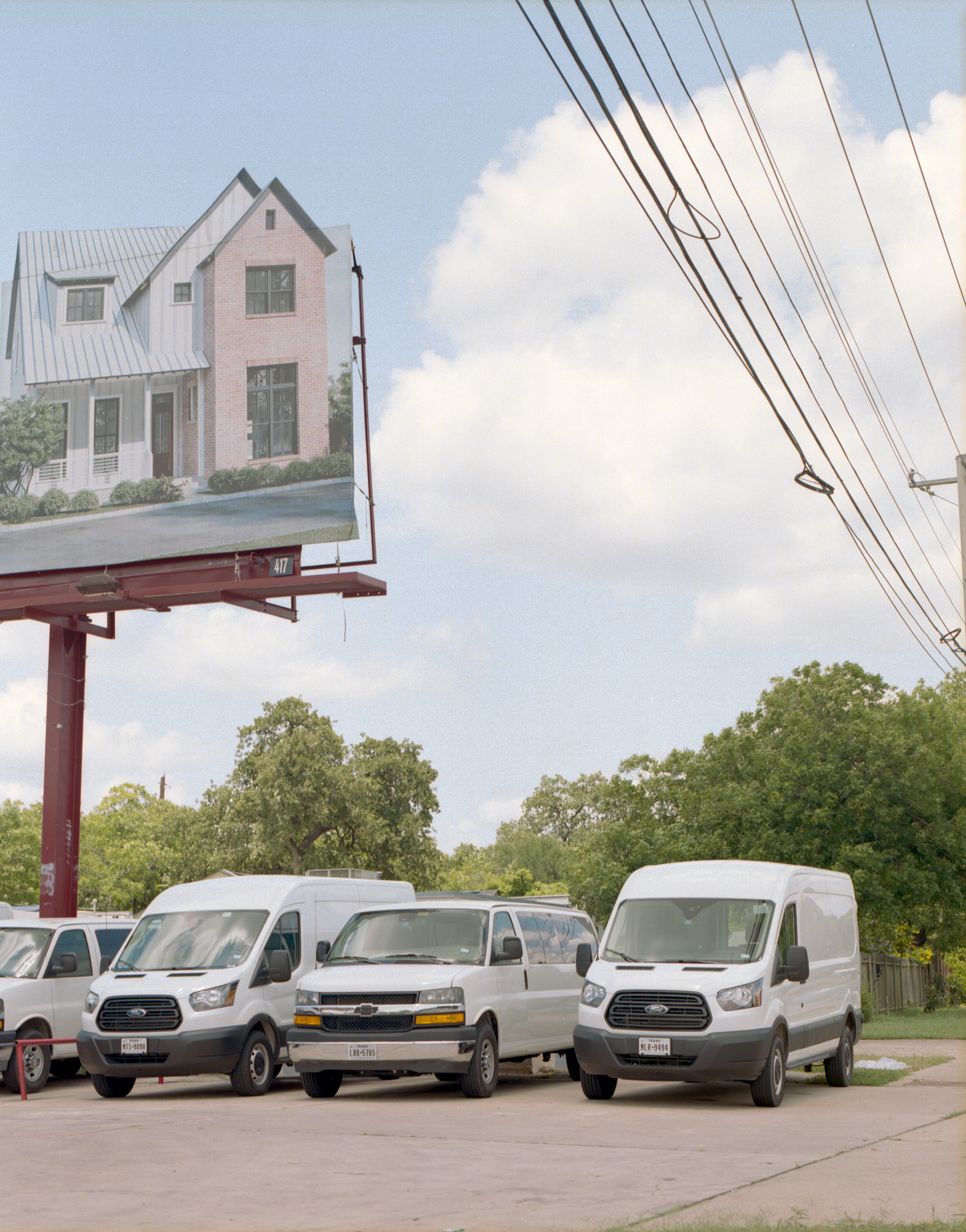
A billboard advertising new homes along Airport Boulevard.
